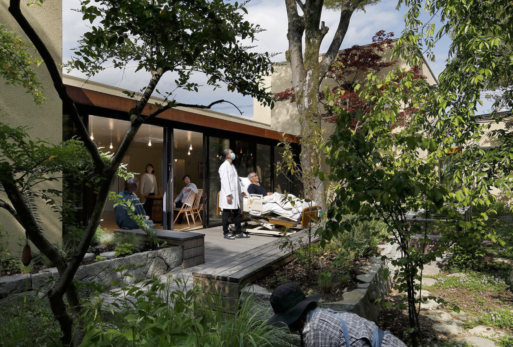
Credit: Naoomi Kurozumi
The connection between the natural world and human health is deeply ingrained in Japan, from Shinto and nature worship, to forest bathing (shinrin-yoku), to the tradition of harmoniously blending gardens and architecture. Japanese architect Yamazaki Kentaro brings those cultural values into full bloom in his award-winning design for the Kawamura Hospice in Shinfuji, Japan.
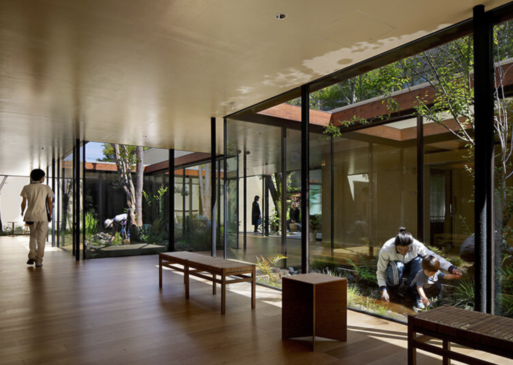
Credit: Naoomi Kurozumi
Viewing the images of the facility, one is struck by how the design manages to break down the barrier between “indoors” and “outdoors” with expansive use of glass. The muted earth tones and generous use of warm woods, combined with abundant light, create a relaxed and welcoming ambiance, which was Kentaro’s goal.
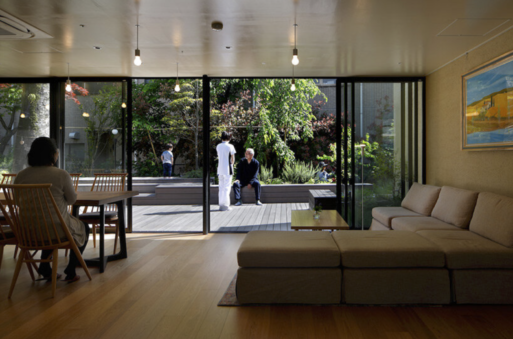
Credit: Naoomi Kurozumi
Upsized sliding doors, which are essentially movable glass walls, open onto broad wooden decks with lush planters or a garden with a flowing stream, further enhancing the sense of union with the outdoors.
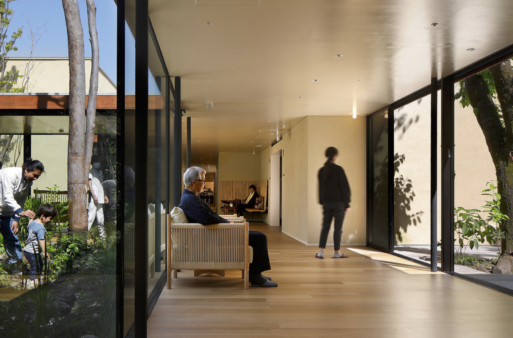
Credit: Naoomi Kurozumi
Kentaro also sought to create a sense of community inside the Kawamura Hospice. In counterpoint to the compact patient rooms, he provided large common areas, allowing patients to gather and interact with each other.
The overall impression is an innovative design that is sensitive to the needs of the terminally-ill cancer patients that it serves, which is what earned it a Good Design Award as one of the best 100 ideas of 2021. Presented to the Yamazaki Kentaro Design Workshop by the Japan Institute of Design Promotion, it’s one of the most prestigious design awards in Asia, reflecting Japanese design values and principles that aim to enrich lives, industries and society.
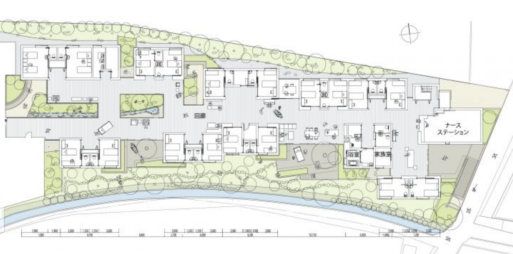
Credit: Yamazaki Kentaro Design Workshop
Kentaro’s creation is part of an evolution that began in the 1990s, when hospice facilities broke away from hospitals, shed the clinical atmosphere, and sought to provide a setting that felt more like home. It’s part of a world-wide movement of human-centered design to provide a dignified, emotionally supportive environment for the dying, including terminally-ill children.
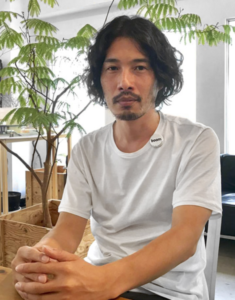
Yamazaki Kentaro.
Credit: designboom
In an interview with designboom, Kentaro said his vision for Kawamura Hospice was guided by his ability to put himself in the shoes of the people who will occupy the spaces he creates.
“I think it is a sensibility where I can empathize with another person. I always want to think a great deal about locality and context in my architecture. How to execute those things become my architectural theme…to empathize with a client’s vision makes the project a success.”

 Kawamura Hospice Seamlessly Fuses Nature with Indoor Spaces
Kawamura Hospice Seamlessly Fuses Nature with Indoor Spaces


 How Dare You Die Now!
How Dare You Die Now!

 “Help Me, Helen”
“Help Me, Helen”














